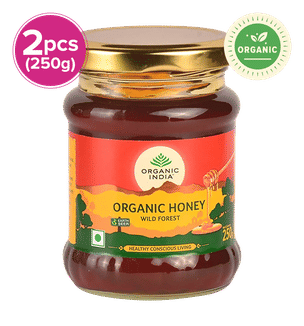- 1
First and foremost, one has to bruise the lemongrass stalk. The citrus-like flavour with its strong aroma is released when lemongrass is brewed after the stalks of the herb have been thoroughly bruised.
- 2
Thus, take the lemongrass stalk and, using the side of a knife, gently press down on it.
- 3
This helps to tear apart the fibrous layers and allows the essential oils and flavour to penetrate the tea quite easily.
- 4
Bruising is a simple technique but very effective in extracting all the flavours from the lemongrass, which would further enrich the taste of the tea.
- 5
Once bruised, the process of boiling now begins with the lemongrass.
- 6
Pour in enough water to fill the number of cups you will be serving, and add fresh, cut lemongrass.
- 7
The amount of lemongrass used can be as per your liking. You could use more for a stronger taste of lemongrass or fewer stalks if you prefer it lighter.
- 8
Boil over medium heat. As the water begins to boil, the essential oils of the lemongrass will begin to come out and fill your kitchen with a very agreeable, citrusy aroma.
- 9
Place the lemongrass in the water and let it begin boiling before adding your tea. You might want loose tea, tea leaves, or even a tea bag - whichever floats your boat.
- 10
Any black or green tea will do the job with lemongrass, though black tea is used much more because of its stronger flavour.
- 11
If you also enjoy a bit of spice in your tea, you might also toss in some ginger here.
- 12
Grated or finely chopped ginger adds heat but also spice and goes very well with lemongrass. Just add a small piece of fresh ginger to the boiling water, along with the tea.
- 13
Together with the two, the combination of lemongrass and ginger is so flavourful, in addition to its health benefits of aiding digestion and boosting immunity.
- 14
Add the tea and ginger, then lower the heat and simmer for around 7-10 minutes. The simmering process allows flavours to deepen and well blend.
- 15
Simmer for longer for better flavour. This is where the water extracts most of the lemongrass, ginger, and tea flavours. Simmering will not be long if a light brew is preferred; however, simmering should be around 10 minutes for full-bodied flavour.
- 16
As it heats up, the water will stain with the appetizing colour of the tea, and the air will be filled with the fragrant aroma of lemongrass and ginger.
- 17
When the liquid has boiled, then you can add milk. You can choose to add as much or as little milk as you desire. Some prefer it creamier, while others just a splash.
- 18
Adding milk not only smoothes and enriches the taste of the tea but also masks the pungency of the tea and the ginger.
- 19
Let the mixture steam for a couple of minutes after adding the milk while stirring occasionally.
- 20
The milk mixes with both the tea and lemongrass, creating the smoothness of the drink.
- 21
Finally, get ready with your sweetener of choice to add to your lemongrass tea. This is optional and entirely up to personal preference.
- 22
You could use honey, sugar, stevia, or even erythritol when you're in the mood for a lower-calorie drink.
- 23
Honey imparts a subtle floral sweetness that blends perfectly with the earthy flavour of the lemongrass.
- 24
Sugar imparts a more direct sweetness. Stir the sweetener into the tea until it's completely dissolved. You may adjust the sweetness to taste.
- 25
Lemongrass tea is so versatile and refreshing, you can enjoy it at any moment.
- 26
The citrus flavours that lemongrass has, combined with the richness of the tea and milk, are very unique and fulfilling.
- 27
Adding a splash of ginger not only enhances the flavour of this tea but its health properties as well.
- 28
Whether you make it for yourself or offer it to your guests, this lemongrass tea recipe is sure to captivate you with its fragrance, flavourful taste, and soothing properties.
- 29
So go ahead, take out your fresh, brewed cup of lemongrass tea, and add a touch of sweetness to enjoy the perfect comfort-refresher drink.

 Serves 3
Serves 3 15 mins
15 mins 2 Kcal
2 Kcal